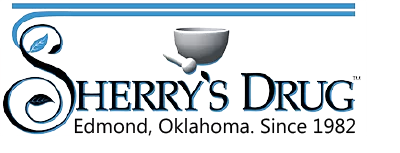Treating Andropause: Prohormones and Hormone Metabolic Modifiers
by Bruce Biundo, BS Pharm, RPh
An excerpt from an article in the International Journal of Pharmaceutical Compounding
Andropause, which is also referred to as male menopause, has been the focus of increasing attention during the past few years in the medical and popular press. Researchers and writers have more closely examined the role of sex hormones such as testosterone and estradiol in maintaining the health of middle-aged or elderly men. In this article, we will discuss some of the metabolic changes that occur during andropause and treatment options that address those changes.
According to literature, andropause is a process involving a gradual alteration in sex hormone levels over a period of years that results in physiologic changes including depression, impotence, decreased libido, muscular weakness, lethargy, and loss of lean body mass. In many men, the major hormonal change during andropause involves either a decrease in the level of testosterone or an increase in the level of estrogen. Others experience both a decline in the level of testosterone and an increase in the level of estrogen. For treatment to be successful, the levels of both testosterone and estrogen must be monitored and measured.
Because andropause has only recently been discussed and studied, treatment options have been limited. For many patients, only one treatment has been available: testosterone supplementation (most often by injection). Although this is frequently the appropriate therapeutic choice, clinicians must recognize other aspects of the patient's hormonal imbalance must also be addressed. The two major active metabolites of testosterone in men are estradiol and dihydrotestosterone. Because an imbalance in the levels of those hormones can be a cause for concern, agents that modify the metabolism of estradiol and dihydrotestosterone are reviewed in this article. The role of prohormones as testosterone boosters is also addressed.
Metabolic Modifiers
The following substances affect the level of estrogens, testosterone, or dihydrotestosterone:
- Zinc
- Vitamin C
- Chrysin
- Progesterone
- Saw Palmetto
- Nettle Root
- Indole-3-carbinol
- Di-indolyl Methane
- Prohormones
The following prohormones can be used to increase testosterone levels:
- Androstenedione
- Androstenediol
- Norandrostenediol
Summary
How do you treat a man in andropause? Therapies other than testosterone supplements alone are now widely available. The best therapy begins with a thorough evaluation of the patient. Follow the adage "first diagnose, then treat."
It is now evident that some men can benefit from a combination of agents, such as a formulation of chrysin and testosterone, or a mixture of androstenedione and androstenediol. Others may prefer to apply DIM topically in combination with prohormones. For some men, a combination that includes androstenediol, norandrostenediol, chrysin, and progesterone is the best treatment option.
Our ability to deliver effective doses of hormone replacement has been enhanced by our increased knowledge of transdermal systems. A variety of hormones, prohormones, and metabolic modifiers are available for the treatment of male hormone imbalance. As interest in this medical specialty increases, pharmacist and doctors who work together will provide a major health benefit for their patients.
Men's Symptom Checklist
Sherry recommends using 0.5 cc of DHEA sublingually every morning - DHEA 20mg/cc - 30cc Bottle $35.00
